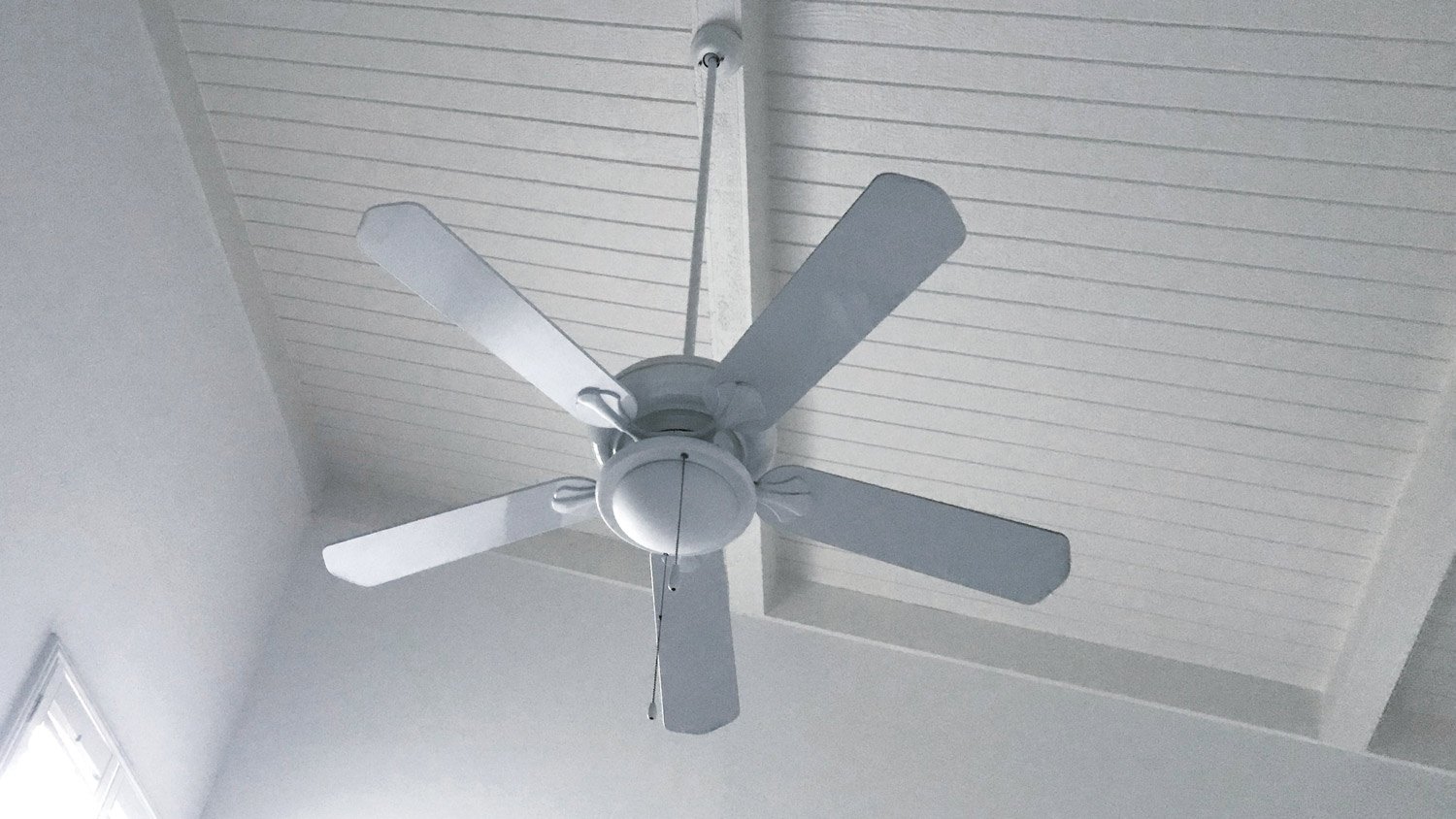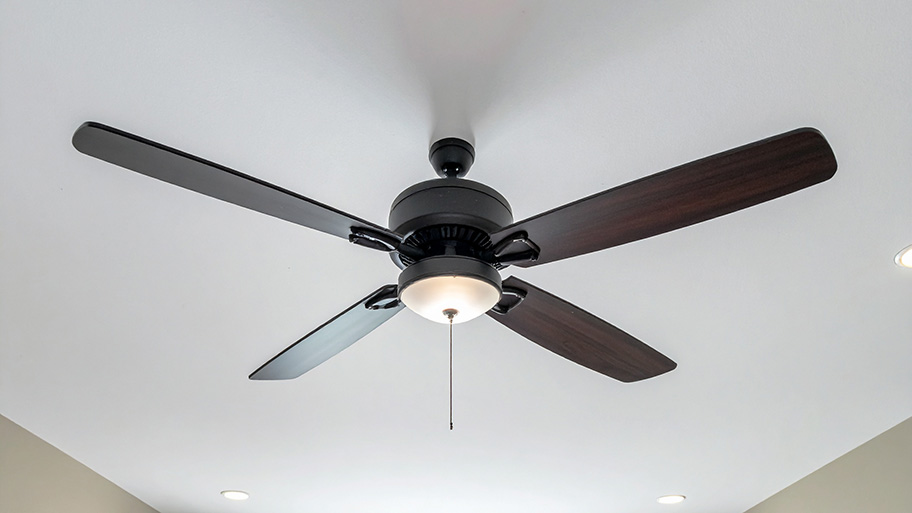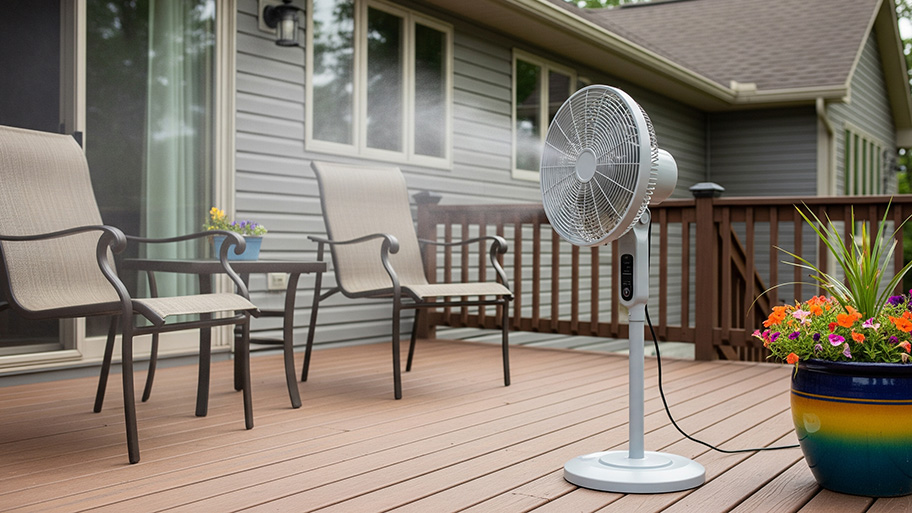
Get matched with top ceiling fan pros in Holcomb, MO
Enter your zip and get matched with up to 5 pros
Need a pro for your ceiling fan service project in Holcomb, MO?
Find Ceiling fan pros in Holcomb

A+ Circuit Solutions Inc.
A+ Circuit Solutions Inc.
We understand that your home and your business are valuable and we make every attempt to minimize the discomforts that come with construction. Contact us in Springfield today! We can take care of all electrical needs for your business and residential needs from repairs to upgrades to new installations and industrial lighting. WE PROVIDE FINANCING FOR ALL ELECTRICAL AND SOLAR INSTALLATIONS THAT ARE NEEDED FOR YOU HOME AND BUSINESS.
"An electrical upgrade was needed at my house and A+ did an excellent job. The electricians were helpful, honest and efficient."
Melissa G on October 2023
We understand that your home and your business are valuable and we make every attempt to minimize the discomforts that come with construction. Contact us in Springfield today! We can take care of all electrical needs for your business and residential needs from repairs to upgrades to new installations and industrial lighting. WE PROVIDE FINANCING FOR ALL ELECTRICAL AND SOLAR INSTALLATIONS THAT ARE NEEDED FOR YOU HOME AND BUSINESS.
"An electrical upgrade was needed at my house and A+ did an excellent job. The electricians were helpful, honest and efficient."
Melissa G on October 2023
Affordable Fans - The Fan Doctor
Affordable Fans - The Fan Doctor
Owner operated. Additional DBA: The Fan Doctor. Licensed electrician in New Hampshire & Massachusetts. Over 30 years experience.
"Excellent parts. Fast delivery."
William W on April 2021
Owner operated. Additional DBA: The Fan Doctor. Licensed electrician in New Hampshire & Massachusetts. Over 30 years experience.
"Excellent parts. Fast delivery."
William W on April 2021
All Around Handyman
All Around Handyman
Owner operated and one employee. No up front money until job is complete, if materials are needed for the job you have a choice to make the purchase yourself or can be added into the job. Estimates are free always!
"Impressed by his work. Took pride in job timeliness utill completion. Went the extra mile to make sure job was done. Will hire again and have for smaller jobs."
BJ S on May 2020
Owner operated and one employee. No up front money until job is complete, if materials are needed for the job you have a choice to make the purchase yourself or can be added into the job. Estimates are free always!
"Impressed by his work. Took pride in job timeliness utill completion. Went the extra mile to make sure job was done. Will hire again and have for smaller jobs."
BJ S on May 2020
Thomas Electric, Inc
Thomas Electric, Inc
Thomas Electric is a local owned company. From the first telephone call, to the last, all your needs will be handled directly by Sam Thomas ( owner). No managers or secretaries to deal with!! We have the most reasonable rates and service call fees. ALL ESTIMATES ARE A FIRM PRICE!! Never will we increase our price on a project due to our negligence! Our staff is friendly, courteous, and presentable. The company is known for it's loyalty and honesty throughout the community. Let us be your next electrical contractor!!
Thomas Electric is a local owned company. From the first telephone call, to the last, all your needs will be handled directly by Sam Thomas ( owner). No managers or secretaries to deal with!! We have the most reasonable rates and service call fees. ALL ESTIMATES ARE A FIRM PRICE!! Never will we increase our price on a project due to our negligence! Our staff is friendly, courteous, and presentable. The company is known for it's loyalty and honesty throughout the community. Let us be your next electrical contractor!!
Patzius Electrical & Plumbing
Patzius Electrical & Plumbing
We install all Appliances, We Build Commercial Electrical Panels, We do new and old repairs on your home. .
We install all Appliances, We Build Commercial Electrical Panels, We do new and old repairs on your home. .
JDS Construction
JDS Construction
General contracting and remodeling services
General contracting and remodeling services

Electric by Miller, Inc.
Electric by Miller, Inc.
Electrical Contracting. Generator Sales Service & Installation Lightning Protection Systems Security Cameras Sales & Installation EBMI was established in 1993 and is a Women Owned Business. Kathy Miller-President / Owner was voted Best Electrical Contracting Company in Grove and the surrounding Grand Lake Area. Our Licensed Electricians are also Certified and Factory Trained Generator Technicians. We sell and install Automatic Home Standby Generators as well as Portable and RV. Our Technicians can make repairs on just about any brand of Generators. Only Trained Technicians are allowed to do Warranty Work on Generators. Call EBMI for all of your Electrical and Generator projects. No job too small. We even repair table or floor lamps!!
Electrical Contracting. Generator Sales Service & Installation Lightning Protection Systems Security Cameras Sales & Installation EBMI was established in 1993 and is a Women Owned Business. Kathy Miller-President / Owner was voted Best Electrical Contracting Company in Grove and the surrounding Grand Lake Area. Our Licensed Electricians are also Certified and Factory Trained Generator Technicians. We sell and install Automatic Home Standby Generators as well as Portable and RV. Our Technicians can make repairs on just about any brand of Generators. Only Trained Technicians are allowed to do Warranty Work on Generators. Call EBMI for all of your Electrical and Generator projects. No job too small. We even repair table or floor lamps!!
Epik Construction & Remodeling
Epik Construction & Remodeling
Epik Construction has a long history of completing projects that exceed customer expectations. We take special care in each and every detail with your budget and goal in mind. From custom work to simple installation jobs - Epik Construction has a service to fit your needs. Feel free to contact us to learn more about how your dreams can become a reality with EPIK!
"Fantastic! The prompt was on time, the workmanship was great, and the preparations were in a timely order."
Geof F on May 2025
Epik Construction has a long history of completing projects that exceed customer expectations. We take special care in each and every detail with your budget and goal in mind. From custom work to simple installation jobs - Epik Construction has a service to fit your needs. Feel free to contact us to learn more about how your dreams can become a reality with EPIK!
"Fantastic! The prompt was on time, the workmanship was great, and the preparations were in a timely order."
Geof F on May 2025

Assured Building Products LLC.
Assured Building Products LLC.
Our company provides great customer service with quality products at a competitive price.
Our company provides great customer service with quality products at a competitive price.
MR PROJECTS
MR PROJECTS
MR PROJECTS has many years experience in various repair,painting, remodeling, drywall, texturing, and maintenance services. "We will do the work you don't want to do!" All work is guaranteed and we make sure you are 100% satisfied.
MR PROJECTS has many years experience in various repair,painting, remodeling, drywall, texturing, and maintenance services. "We will do the work you don't want to do!" All work is guaranteed and we make sure you are 100% satisfied.
The Holcomb, MO homeowners’ guide to ceiling fan services
From average costs to expert advice, get all the answers you need to get your job done.
 •
•Discover the cost to install a ceiling fan, including labor, materials, and tips to save. Learn what impacts your price and how to budget for your project.

If your ceiling fan stops working due to a bad motor or broken pull chain, here’s what you can expect to pay to get it fixed.

Hiring an electrician to install a ceiling fan will make the process safer and easier. But before contacting a pro, ask yourself these ceiling fan questions.

If your ceiling fan isn’t spinning, the problem could be something as straightforward as a stuck switch or a blocked blade. In more rare cases, it might point to a deeper issue inside the fan.

Ceiling fans need the help of lubrication to run smoothly and quietly. Learn how to oil a ceiling fan without taking it down in a few simple steps.

It's time to cool off! Learn 10 ways to make your room cool without an air conditioner in this informational fan hack guide.
- Clarkton, MO Ceiling fan pros
- Campbell, MO Ceiling fan pros
- Gideon, MO Ceiling fan pros
- Piggott, AR Ceiling fan pros
- Malden, MO Ceiling fan pros
- Kennett, MO Ceiling fan pros
- Rector, AR Ceiling fan pros
- Portageville, MO Ceiling fan pros
- Bernie, MO Ceiling fan pros
- Hayti, MO Ceiling fan pros
- Senath, MO Ceiling fan pros
- Steele, MO Ceiling fan pros
- Caruthersville, MO Ceiling fan pros
- Lilbourn, MO Ceiling fan pros
- Dexter, MO Ceiling fan pros
- Marmaduke, AR Ceiling fan pros
- Neelyville, MO Ceiling fan pros
- New Madrid, MO Ceiling fan pros
- Tiptonville, TN Ceiling fan pros
- Corning, AR Ceiling fan pros
- Gosnell, AR Ceiling fan pros
- Ridgely, TN Ceiling fan pros
- Blytheville, AR Ceiling fan pros
- Poplar Bluff, MO Ceiling fan pros
- Bloomfield, MO Ceiling fan pros
- Leachville, AR Ceiling fan pros
- Naylor, MO Ceiling fan pros
- Paragould, AR Ceiling fan pros
- Oak Grove Heights, AR Ceiling fan pros
- Morehouse, MO Ceiling fan pros
- Roofing in Holcomb
- Property Appraiser in Holcomb
- Plumbing in Holcomb
- Gas Leak Repair in Holcomb
- Drywall in Holcomb
- Concrete Repair in Holcomb
- Painting in Holcomb
- Kitchen And Bath Remodeling in Holcomb
- Plumbing in Holcomb
- Roofing in Holcomb
- Kitchen And Bath Remodeling in Holcomb
- Tree Service in Holcomb
- Fencing in Holcomb
- Pest Control in Holcomb
- Siding in Holcomb
- Lawn And Yard Work in Holcomb
- Landscaping in Holcomb
- Concrete Repair in Holcomb
- Foundation Repair in Holcomb
- Garage Doors in Holcomb
- Flooring in Holcomb
- Moving in Holcomb
- Windows in Holcomb
- Garbage Collection in Holcomb
- Swimming Pools in Holcomb
- Insulation in Holcomb
- Pressure Washing in Holcomb
- Gutter Cleaning in Holcomb
- Exterior Painting in Holcomb
- Septic Tank in Holcomb
- 🌱 "Mow a small front yard"
- 🛠 "Fix a leaking pipe under the sink"
- 🏠 "Repair shingles on an asphalt roof"